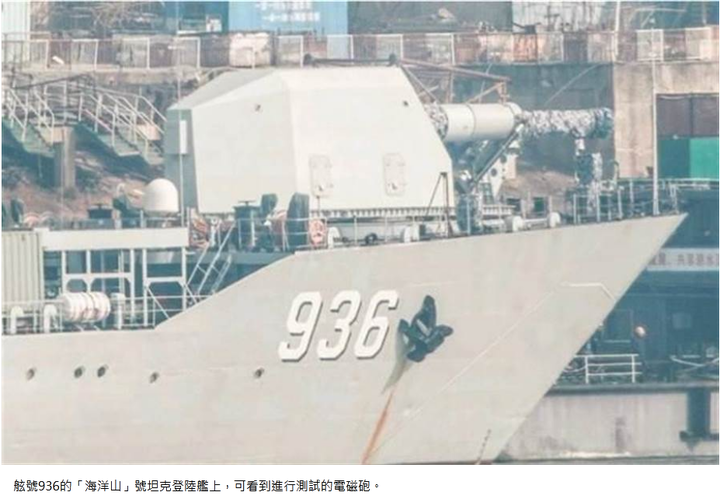M-109 A6 帕拉丁在星期三發射了HVP炮彈,這個炮彈是BAE電磁炮的副產品,首次在測試中擊落了巡弋飛彈靶機BQM-167。
據信未來可以針對BM發展,或可成為區域防空飛彈一環。(當然這是BAE的宣傳,離ATBM還要走很多路。)
目前這樣的一發超高音速炮彈價值8萬6美,而一發愛國者………啪啦啪啦啪啦其他如下文。
(記者內文對炮彈速度寫明是5馬赫,但是考證之後認為或有問題,因此暫不予承認,修正開樓標題)
‘Sci-Fi Awesome’—A U.S. Army Howitzer Just Shot Down A Cruise Missile
David AxeContributor
Aerospace & Defense
A U.S. Army self-propelled howitzer firing a Mach-5 shell just shot down a cruise missile for the first time.
It’s a big deal. Imagine, in some future war, Army howitzers ringing a strategic air base in the western Pacific, swatting down incoming missiles so the base’s planes can take off and land unmolested.
The shoot-down took place at the White Sands missile range in New Mexico on Wednesday. An M-109A6 Paladin tracked howitzer fired a 155-millimeter-diameter hypervelocity shell at an incoming BQM-167 target drone, blasting it to pieces.
“Tanks shooting down cruise missiles is awesome—video-game, sci-fi awesome,” said Will Roper, the U.S. Air Force’s top scientist.
The cannon-based air-defense was part of a two-day trial of a new command system the Air Force is developing. The Advanced Battle Management System is an artificial intelligence that takes sensor data from a whole bunch of different sources—satellites, stealth fighters, blimps, ground-based radar installations—and combines it.
What results is a digital picture of a whole battlefield. The A.I. then identifies the friendly forces that could destroy a particular target and gives commanders a menu from which to pick a shooter.
ABMS is big, ambitious and controversial. The Air Force wants it—and is willing to give up existing command planes in order to free up the money. Congress is skeptical the new control system will work as well as the Air Force insists it will.
It worked well enough to help a howitzer shoot down a missile.
uncaptioned
An M-109 fires a hypervelocity projectile at a[+]
U.S. ARMY
After neglecting its artillery for decades, the Army lately has been spending billions of dollars to upgrade hundreds of cannons and rocket-launchers. The goal is twofold—one, to out-shoot the Russians in some future land war in Europe; and two, to make Army artillery somehow relevant in an island-hopping campaign against China.
For the China problem, howitzers shooting down missiles could be just the thing. After all, China possesses around 1,300 rockets and cruise missiles that, during a major war, could rain destruction on America’s Pacific bases. The airfields in Okinawa and Guam surely would be the main targets.
The Army keeps Patriot air-defense missiles in Okinawa and longer-range Terminal High-Altitude Area-Defense in Guam. Patriot and THAAD in theory can shoot down incoming ballistic missiles—and Patriot can hit low, slow cruise missiles, too.
But at high cost. A single Patriot missile costs $5 million. A THAAD missile costs $12 million. The Army can afford only so many missiles. It’s not clear the service has enough Patriots and THAADs to shoot down all of the hundreds of missiles the Chinese could fire at Okinawa and Guam.
BAE Systems’ super-aerodynamic, precision-guided hypervelocity projectile changes the math. True, its range is a fraction of the 100 miles or more that a THAAD missile can travel. On the other hand, one Mach-5 shell costs just $86,000. And that cost could drop as the military buys more of the munitions.
The M-109 in the command exercise shot down a slow, low-flying cruise missile. But BAE Systems claims the HVP shell is capable of hitting faster-, higher-flying ballistic missiles, too. It’ll take more testing to prove that out.
Still, that first test is good news for Army air-defenders—and for the Air Force. If America and China go to war and China bombards U.S. air bases, battalions of howitzers could point their guns toward the sky and throw up a protective ring of very fast metal.
fredcoc wrote:
5馬赫耶 ! 跟戰車砲的發射初速一樣快 ~
是呀,問題是HVP這是全程的速度都是這樣,不是只有炮口,趕快讓你家電磁炮替換上ZPT-98裝上99式
 要不然只有被打的份
要不然只有被打的份
話說,美帝傳言封殺中芯,股價大跌耶,愛國散戶好可憐呀
 這下055沒有14nm可以用了
這下055沒有14nm可以用了
內文搜尋
X


























































































